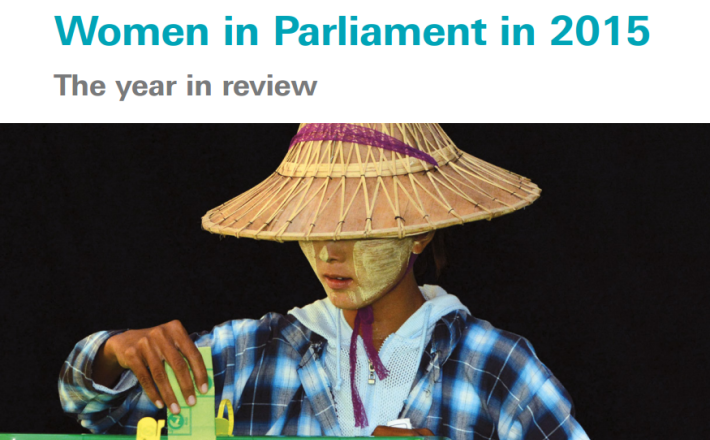Women in Parliaments in 2015: The year in review
The number of women Speakers of Parliament reached an all-time high by the end of 2015 at 49 (or 17.9% of the total number of Speakers), reports the Inter-parliamentary Union (IPU) in “Women in Parliaments in 2015: The year in review”. That is up from 43 at the beginning of the year. Elections in Argentina, Denmark, El Salvador, Finland, Lesotho, San Marino, Switzerland and Trinidad and Tobago resulted in the appointment of women Speakers. Women also became Speakers for the first time ever in Namibia, Nepal and the United Arab Emirates. Despite the significant increase in the number of women Speakers of Parliament, the number of women parliamentarians globally rose by a mere 0.5% from 2014. Bigger improvements were seen in the Americas (+0.8%), sub-Saharan Africa (+0.7%) and Europe (+0.4%); but those were tempered by timid increases in the Arab States (+0.3%), Asia (+0.1%) and the Pacific (+0.1%). The Americas remain in the lead in terms of regional averages, with women’s parliamentary representation standing at 27.2%. There was a slight decrease in the Nordic countries (-0.4%), which have now stagnated at 41.5%. It was also reported that in elections where quotas were legislated in 2015, women took almost a quarter of the parliamentary seats available. More women appear to have won seats where political parties adopted voluntary quotas. Only 13.6% of seats were won by women in countries without quotas. Click here to see the report.

The number of women Speakers of Parliament reached an all-time high by the end of 2015 at 49 (or 17.9% of the total number of Speakers), reports the Inter-parliamentary Union (IPU) in “Women in Parliaments in 2015: The year in review”. That is up from 43 at the beginning of the year. Elections in Argentina, Denmark, El Salvador, Finland, Lesotho, San Marino, Switzerland and Trinidad and Tobago resulted in the appointment of women Speakers. Women also became Speakers for the first time ever in Namibia, Nepal and the United Arab Emirates. Despite the significant increase in the number of women Speakers of Parliament, the number of women parliamentarians globally rose by a mere 0.5% from 2014. Bigger improvements were seen in the Americas (+0.8%), sub-Saharan Africa (+0.7%) and Europe (+0.4%); but those were tempered by timid increases in the Arab States (+0.3%), Asia (+0.1%) and the Pacific (+0.1%). The Americas remain in the lead in terms of regional averages, with women’s parliamentary representation standing at 27.2%. There was a slight decrease in the Nordic countries (-0.4%), which have now stagnated at 41.5%. It was also reported that in elections where quotas were legislated in 2015, women took almost a quarter of the parliamentary seats available. More women appear to have won seats where political parties adopted voluntary quotas. Only 13.6% of seats were won by women in countries without quotas. Click here to see the report.